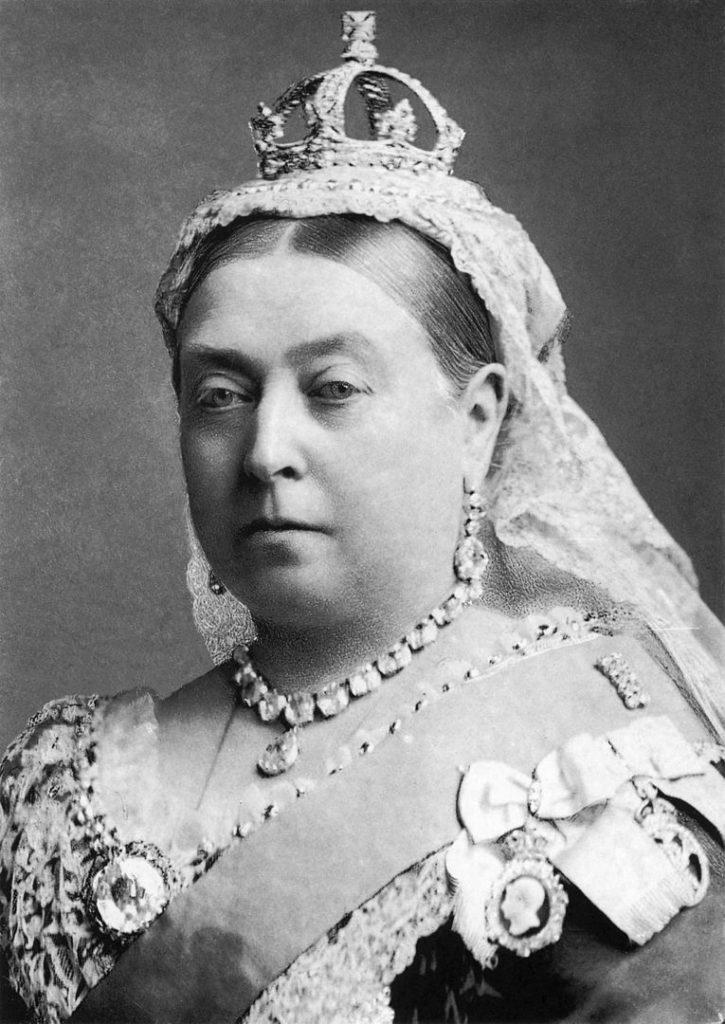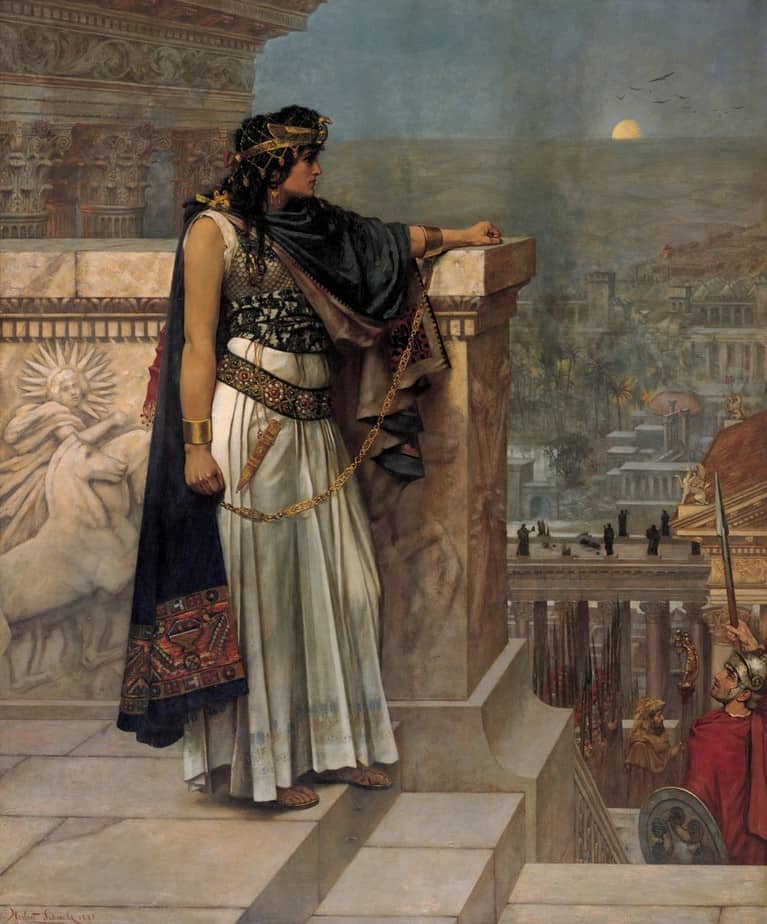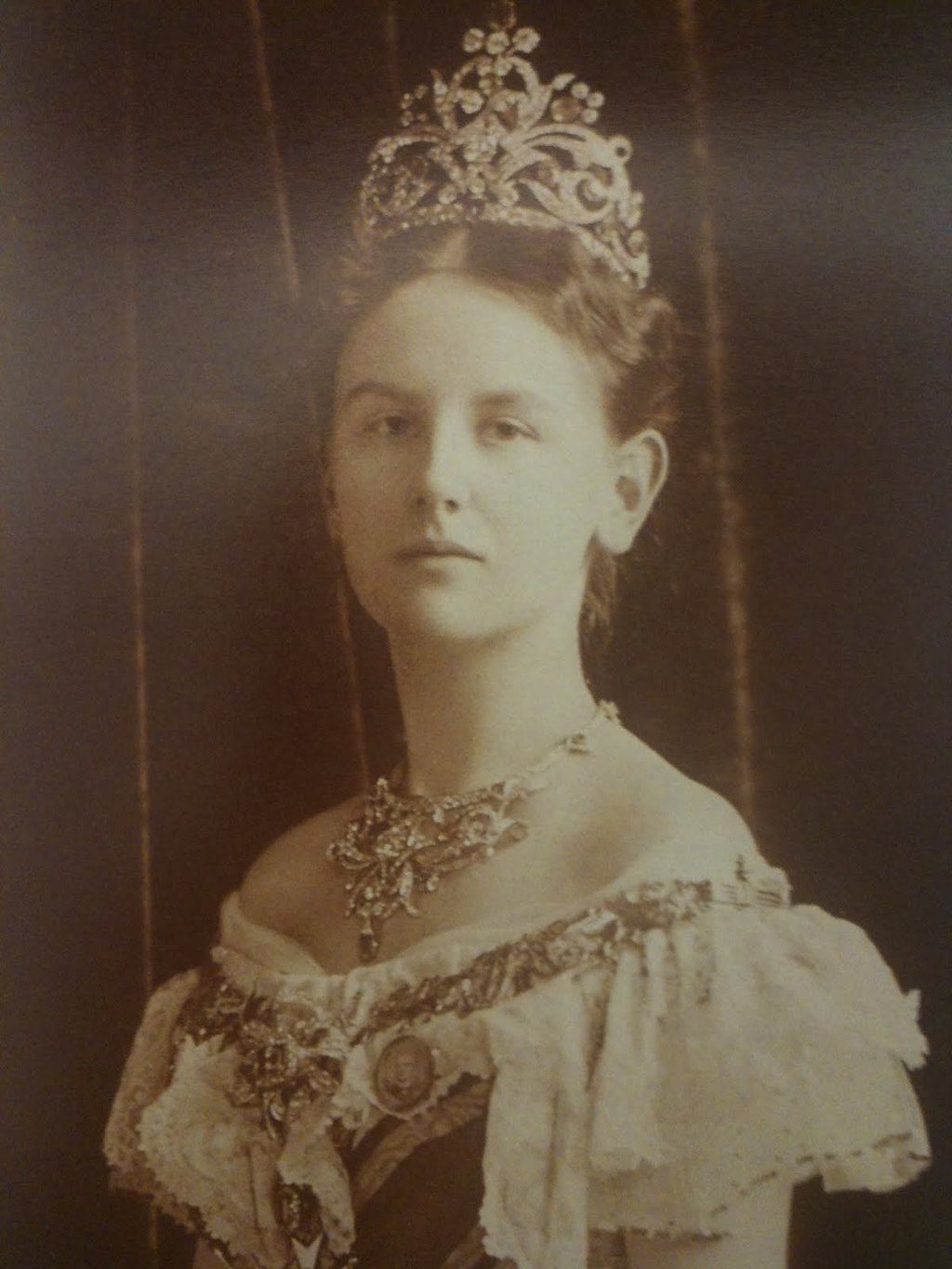
Saint Theodora and her cortege. Photo by Michel Bakni – Wikimedia Commons
15 Most Famous Queens in History
*Originally published by Lilian on April 2022 and Updated by Vanessa R on May 2023
Throughout history, we have had emperors and kings who became famous or infamous because of an event or their personality.
There are also famous queens who were powerful and were revered by their subjects. These queens had great influence during their reign.
They prospered in their leadership, captured the public’s imagination and even had songs composed for them. Through their leadership, they defied expectations and redefined what it meant to be a queen.
Some of the most fascinating queens that will be highlighted here are Nefertiti, Cleopatra, and Queen Victoria of England.
Read more about them below.
1. Hatshepsut, Queen of Ancient Egypt – 1478 BC – 1458 BC

A Statue of Hatshepsut. Photo sourced from Wikimedia Commons
Hatshepsut was married to Thutmose II and was regarded as a female pharaoh. She not only had a beard but also performed the pharaoh’s ceremonial race at the Sed festival. This was her emblem.
As the first female Pharaoh, she ruled for about two decades in the first half of the 15th century B.C.
It is no surprise that she came from royalty. Her father was king Thutmose I from the 18th-dynasty.
As it was back then, royalty married royalty. So Hatshepsut married her brother Thutmose II but they did not get a son together.
Her husband had a second wife with whom they had a son. This son was known as Thutmose III. Thutmose II died and his son was to take over, unfortunately, he was considered too young to rule.
This meant that Hatshepsut was the co-regent with her stepson. The duo is said to have had a great partnership and her reign is considered one of the most successful.
It is unfortunate that after she died, there were attempts to erase signs of her reign.
2. Queen Victoria of England – Ruled from 1837 to 1901

Queen Victoria, 1819–1901, by Bassano, 1882. Photo by Alexander Bassano – Wikimedia Commons
Victoria became queen during the height of the British Empire, which reigned over six continents.
She was widely regarded as an extreme conservative who contributed to massive political and social reforms in the United Kingdom and the wider British Empire.
One of her greatest achievements was abolishing slavery throughout her empire. Another great achievement attributed to her is, that Victoria supported the Factory Act “which reduced the working day in textile mills to ten hours”.
Additionally, she helped with the “Third Reform Act of 1884” this reform granted the right to vote to all male heads of the family as well most British men regardless of their family status.
Like Hatshepsut, Victoria married her relative, first cousin Prince Albert of Saxe-Coburg and Gotha in 1840.
3. Zenobia, Queen of Palmyra – 270 AD – 274 AD

Queen Zenobia’s Last Look Upon Palmyra. Photo by Herbert Gustave Schmalz – Wikimedia Commons
Iulia Aurelia Zenobia of Palmyra was a 3rd-century queen of Palmyra (now modern Syria). This territory was considered an oasis city halfway between the Mediterranean and Euphrates.
Her ancestors are said to be Cleopatra and Dido of Carthage who defied the Romans and rode into battle against them.
Zenobia became queen after her husband Septimius Odaenathus and their son were assassinated in 267. They had another son, Vaballanthus, who was next in line but was still an infant.
This led Zenobia to rule as the regent queen. She is regarded as the warrior queen who captured Egypt in 269 AD.
Egypt was then part of Asia Minor. She also captured Cappadocia and Bithynia. Her empire was one of the largest.
She is credited with protecting religious minorities and maintaining a stable administration.
In 274 AD, Zenobia went to battle with the Romans but was defeated. It is believed that she was captured and died in captivity. The nature of death is still not clear.
4. Empress Wu Zetian, China – 690AD – 705 AD
This empress is said to be one of the most powerful Chinese empresses to have ever reigned. She was born into a wealthy and noble family.
As a child of royalty, Wu Zetian was quite educated. When she was 13, she was sent to serve in the court of Emperor Taizhong as a concubine.
This was strange considering she came from a wealthy family. After the death of her husband, Wu Zetian was sent to become a Buddhist nun.
She was however brought back after the new Emperor’s wife, Empress Wang had a power struggle with one of his favourite concubines, Consort Xiao. Wu was made a concubine again, now to Emperor Gaozong.
As an empress, she also played a key role in reforming the imperial examination system. Additionally, she encouraged capable officials to work in governance to maintain a peaceful and well-governed state.
5. Boudicca – Queen of the Iceni

An engraving by William Sharp published in 1793, based on Boadicea Haranguing the Britons (called Boudicca, or Boadicea) by John Opie – Wikimedia Commons
Boudicca was the wife of King Prasutagus of the Celtic Iceni, in the east of ancient Britain.
Their region was attacked by the Romans who conquered Britain. Despite their new victory, the Romans allowed the king to continue his rule. Unfortunately, the king died his wife, Boudicca took over.
However, the Romans wanted the territory leading to Boudicca going to war with them.
This happened in 60 AD when she led her troop against the Romans. They killed thousands of Roman soldiers, however, her victory did not last long. She was captured by the Romans and she drank poison while in captivity.
6. Cleopatra VII – Queen of Ancient Egypt
She is considered to be the last pharaoh of Egypt. After her reign, the Romans took control.
Cleopatra is largely known for her relationships with Roman commanders Julius Caesar and Mark Antony. She had three children, one with Julius Caesar and twins with Mark Anthony.
As queen, she was considered smart and politically valuable. She made the right alliances with the Romans.
Her greatest achievements are said to be in trade. She built up Egypt’s economy, bolstering her country’s status as a world power. She traded with Arabia and India. Read more about her here.
7. Maria Theresa of Austria – 1740 AD – 1780 AD

Portrait of Maria Teresa d’Austria. Photo by ambito campano – Wikimedia Commons
To begin with, Maria was never crowned empress. You are probably wondering how she made this list.
Maria was the only female ruler in the House of Habsburg, the Archduchess of Austria and the Queen of Hungary and Bohemia.
When she got the crown, Maria Theresa was only 23 years old in 1740 AD. However, her husband, Francis I, was considered the ruler.
This did not stop Maria from governing the Habsburg monarchy all by herself.
She is considered to be one of Europe’s longest-ruling monarchs. Together with her husband, they had 16 children.
As the queen, she faced opposition from men she would not accept a woman as a leader.
After winning their confidence, Maria reinforced domestic and foreign policy by centralizing and strengthening the empire’s power. Additionally, she also built up its military might and instituted a fair and reasonable tax schedule for estates.
8. Marie-Antoinette of France – 1755 – 1793
Marie was the daughter of Holy Roman Emperor Francis I and Maria Theresa. In 1770, she was married to the dauphin Louis, grandson of France’s King Louis XV.
She was also in power during the French Revolution and was considered both conniving and a naïve political pawn.
As a woman married to a monarch, she was expected to start having children immediately. This did not happen until eight-year later when she started having children.
Additionally, she was accused of being reckless with money and promiscuous. The French even accused her of siring children with other men.
She was greatly linked to the French Revolution. Her family was placed under house arrest, the monarch was overthrown in 1792 and her husband was executed in 1793. She spent the rest of her life in prison.
9. Empress Theodora, – 527 AD – 548 AD

Saint Theodora and her cortege. Photo by Michel Bakni – Wikimedia Commons
Empress Theodora was one of the most influential and powerful women in the Early Middle Ages. She was the wife of Emperor Justinian I and co-ruler of the Byzantine Empire.
Theodora was of Greek descent but was born in Mabbug, Syria. Before her marriage to Justinian, she was an actress and had fun at banquets for the nobles.
They got married between 523 AD and 525 AD. Her husband died in 527 AD, and Theodora took control of the empire.
She made several decisions about the government. Some of them were her dissatisfaction with high taxes, religious controversy, and political corruption.
Her decisions led to the Nicaea riots in Constantinople. She intervened and was able to persuade her husband to stay. The two successfully quelled the revolt.
In turn, she made Constantinople one of the most sophisticated cities in the world and promoted women’s rights.
Under her reign, bridges, aqueducts and churches were built. Theodora died of cancer on June 28, 548 AD. She and Justinian are both considered saints by the Eastern Orthodox Church.
10. Empress Suiko, Japan – 593 AD – 628 AD
She was the first Empress of Japan and during her rule, Suiko established Buddhism as the country’s official religion. She also introduced the Chinese calendar.
It is said that she adopted the Chinese bureaucratic system and installed the twelve grades of cap rank. Furthermore, she introduced Japan’s first constitution that focused on the morals and virtues of government officials.
Her reign lasted for 35 years. The actual site of Suiko’s grave is known. She is traditionally venerated at a memorial Shinto shrine (misasagi) in Osaka. The Imperial Household Agency named this location Suiko’s mausoleum. It’s formally named Shinaga no Yamada no misasagi.
11. Isabella I of Castile- 1474- 1504
The union of the “Catholic Monarchs” was formed by Isabella’s marriage to Ferdinand II of Aragon, and it directly contributed to the eventual unification of Spain. During her time in office, she reformed the government, significantly reduced crime, and secured debt relief for the Kingdom.
She and her husband financed Christopher Columbus’ voyage in 1492, during which he discovered the New World and finished the Reconquista by annexing Granada, putting an end to centuries of Muslim rule over parts of the Iberian Peninsula.
In addition, she and her husband created the Spanish Inquisition, primarily to identify and purge heretics among Muslims and Jews who had converted to Catholicism and to uphold traditional Catholicism within their respective empires. Eventually, Spain would be reunited under the rule of their grandson, King Charles V, thanks to their marriage and claims.
12. Wilhelmina of the Netherlands- 1890- 1948

See page for author, Public domain, via Wikimedia Commons
After her coronation at age 10 in 1890, following the death of her father, Wilhelmina ruled the Netherlands for 57 years. Wilhelmina officially took over in 1898, but her mother served as regent during these early years.
The Dutch public favoured her during her rule, especially for preserving the country’s neutrality during World War I.
Wilhelmina moved to England in 1940 following Germany’s invasion of the Netherlands. She continued to send messages from there to the Dutch people, pleading with them to resist German occupation and hold onto hope for impending freedom. The locals greeted her with warm arms when she returned following the end of the German occupation in 1945.
13. Catherine the Great-1533-1536
Russia’s most famous and lengthiest female sovereign, who ruled from 1762 until 1796. Russia’s golden age is referred to as her reign.
Sophie von Anhalt-Zerbst, a princess born in Prussia, was Catherine’s second cousin and husband when she wed Peter III at the age of 16 in 1745. Peter was forced to resign in 1762 after Catherine overthrew him.
With his murder eight days later, Catherine took full control as her son Paul I’s Empress Regent. Under her leadership, Russia had a rebirth, grew more solid and well-known as one of Europe’s major nations.
14. Anne Boleyn-1533-1536
Anne Boleyn, King Henry VIII of England’s second wife, served as Queen of England from 1533 until 1536. A key figure in the political and religious upheaval that led to the English Reformation was Anne Boleyn. Anne, who received her education at the French court, was a skilled lady-in-waiting for Catherine of Aragon, first in France and later at the English court. By 1526, she had caught Henry VIII’s eye.
Early on in 1531, Henry VIII and Anne were secretly wed. Later, at the end of 1532, they were married in public. Having Anne pregnant at this point. For the purpose of establishing himself as the new head of the English Church, Henry put in place a series of acts. Elizabeth I, who would succeed Anne as queen, was born in 1533.
The marriage of the royal couple was not long-lastingly blissful. In addition to being unpopular, Anne’s straightforward and vivacious demeanour were unlike that of a traditional queen. A stillborn child was also born to her after a miscarriage. In the year 1536, Henry courted Jane of Seymour and put her up in the palace.
15. Jane Grey
Although she only held the English crown for nine days, Jane Grey, an English noblewoman, is best known as the “Nine Days’ Queen.” To stop Mary I from taking the throne, she was picked by King Edward VI’s closest advisers. Jane Grey was viewed as a superb candidate for a Protestant, whereas Mary was a devout Catholic who was likely to act against the Reformation.
Just the period from July 10 to July 19 saw Grey continue to rule. Elizabeth was then overthrown by a military force assembled by Mary, who then ascended to the kingdom and eventually had Grey put to death.
Planning a trip to Paris ? Get ready !
These are Amazon’s best-selling travel products that you may need for coming to Paris.
Bookstore
- The best travel book : Rick Steves – Paris 2023 – Learn more here
- Fodor’s Paris 2024 – Learn more here
Travel Gear
- Venture Pal Lightweight Backpack – Learn more here
- Samsonite Winfield 2 28″ Luggage – Learn more here
- Swig Savvy’s Stainless Steel Insulated Water Bottle – Learn more here
Check Amazon’s best-seller list for the most popular travel accessories. We sometimes read this list just to find out what new travel products people are buying.











